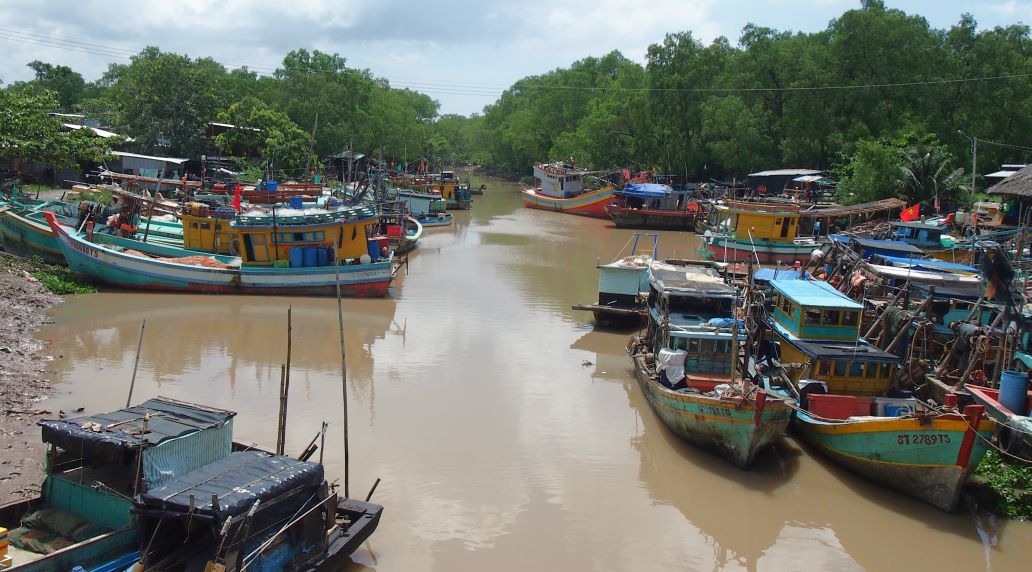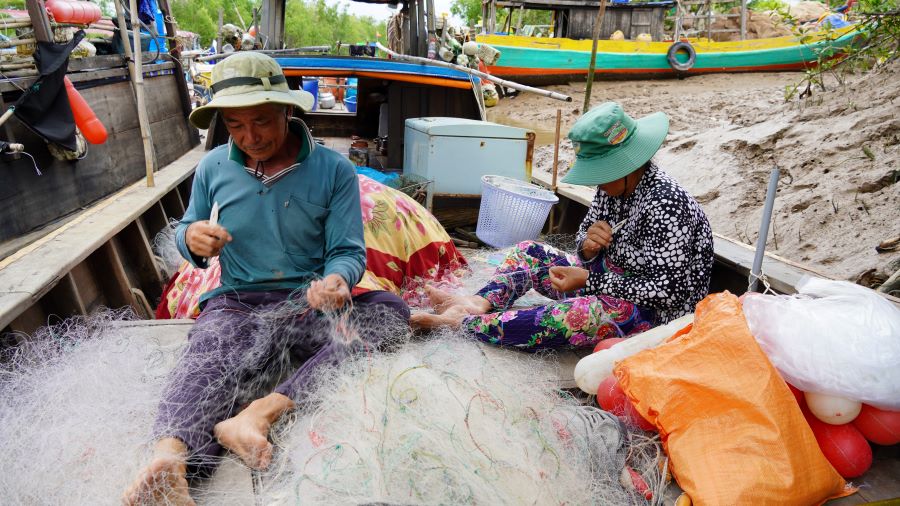After a few days at sea, they have to return to shore
From the Lunar New Year 2025 to now, many coastal fishing vessels in Soc Trang province have faced prolonged landing due to weather, big waves and strong winds.
Ms. Nguyen Thu Thao - a fisherman in Tran De town (Tran De district, Soc Trang province) - shared: After Tet, the boat goes out to sea for a few days and then has to return to shore due to thunder and wind. During the recent sea trip, the family only exploited a few hundred seafood fish.
"The wind is too strong, the ships are so small that they don't dare to go out to sea. Every year at this time, there are few thunderstorms, but this year there are too many thunderstorms, affecting the exploitation. My family has dependent on the sea profession, and the boat has been ashore for more than half a month, so my income has also been affected," said Ms. Thao.
Ms. Thao said that her family's boat specializes in exploiting fresh fish for dried fish making, but at this time the boat cannot go to sea, leading to a decrease in the output of dried fish supplied to the market.

A similar situation also occurs in Vinh Hai commune (Vinh Chau town, Soc Trang province), which is famous for shrimp exploitation.
Mr. Truong Bao Ky, a fisherman here, said that this was the time of shrimp exploitation but the wind was too strong, so the boat was anchored at the wharf. Mr. Ky and the fishermen here plan to wait 10 days until the sea is calm before considering exploitation.
"Our boats are small, mainly fishing near the shore, so when there is a storm, we don't dare to go to sea. If I don't go to sea, I won't have an income, so I have to work as a construction worker to earn money to cover my living expenses," said Mr. Ky.

Fishermen in need
Mr. Ly Hoang Cho - Chairman of the My Thanh Seafood Fisheries Union (Vinh Hai Commune, Vinh Chau Town, Soc Trang Province) said that the Union has 82 coastal fishing vessels in forms such as shrimp paste and bottom-fishing. Although it is the exploitation season, many ships have to stay ashore. To have a source of income, some households have left their boats ashore to find other jobs.
According to many fishermen, the fact that boats are "streamless" means that the jobs and income of hundreds of fishermen are seriously affected. Many families are in trouble because fishing is their main job. In particular, most of the people with fishing boats along the coast are poor households, without land for production, and depend mainly on water.
Fisherman Nguyen Quoc Dung (Cu Lao Dung district, Soc Trang province) shared: "The thunderstorms, constant sea roughness, and boats unable to go to sea make fishermen like us quite helpless. Although I want to go to sea, my boat is small in capacity, so I do not dare to take any risks because of the big waves and strong winds. If we don't go to sea, we don't know what kind of job we can do to make a living because we have only made a living at sea for decades."
Soc Trang is one of the provinces with key fishing grounds with strong development in fisheries. The whole province currently has about 1,000 fishing vessels, with a fishing workforce of more than 300,000 people, of which about 5,630 are workers directly at sea. In 2024, the province's seafood exploitation output will reach 68,581 tons.
The situation of fishing boats lying ashore for a long time due to unfavorable weather has increased difficulties for fishermen in Soc Trang. In recent years, seafood output has decreased, while raw material prices have increased, and shrimp purchase prices have decreased, making the lives of fishermen along the coast even more precarious.
According to the Soc Trang Province Hydrometeorological Station on the day and night of February 25, the sea area from Binh Thuan to Ca Mau and the western sea area of the South China Sea (including the western sea area of Truong Sa archipelago) will have strong northeast winds of level 5, sometimes level 6, gusting to level 7-8, rough seas, waves 2.0-4.0m high. Natural disaster risk level due to strong winds at sea - level 2. All ships operating in the above areas are at high risk of being affected by tornadoes, strong winds and big waves.











